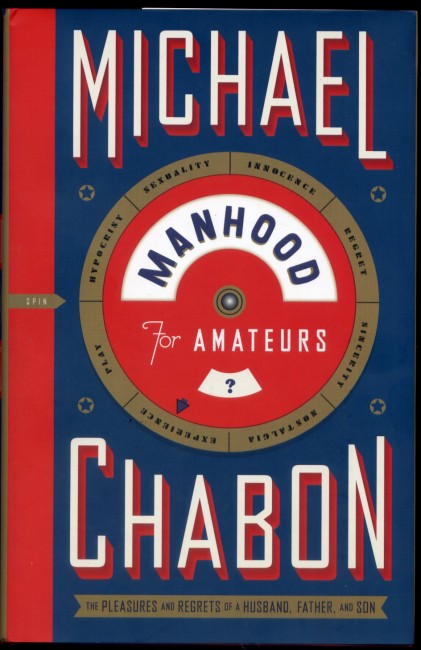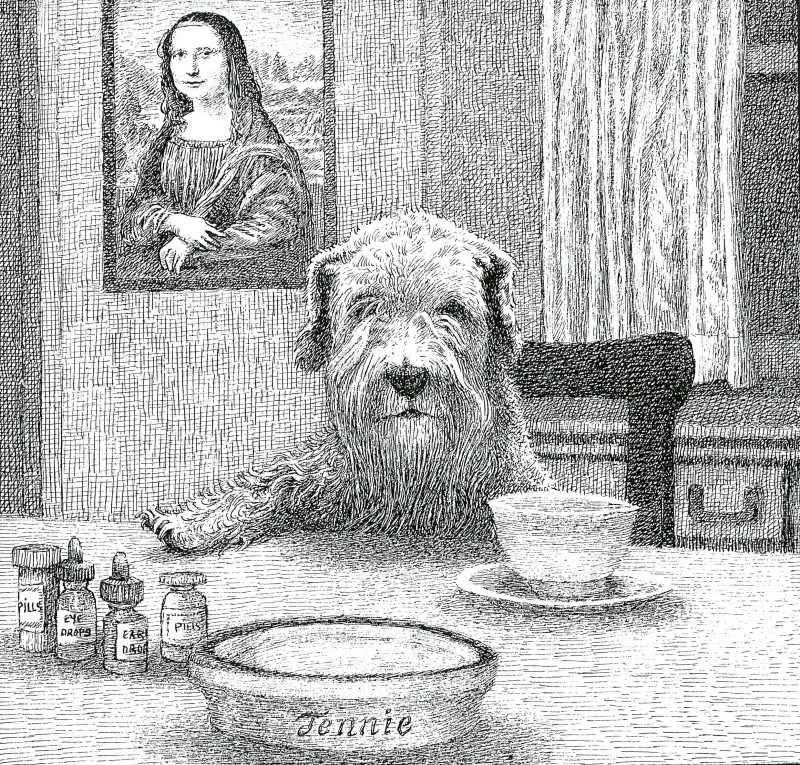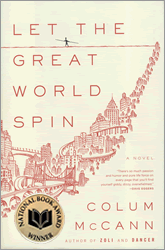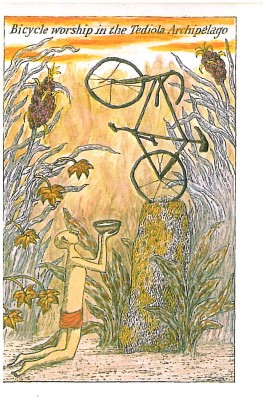‘Books’ Category Archives
Jun
Oh, So That’s Why We Do What We Do
by Lefort in Books


Michael Chabon is one of our favorite contemporary authors. If you haven’t read his Amazing Adventures of Kavalier & Clay, in particular, or Wonder Boys, or any of his other novels, do yourselves a huge favor and do so. Chabon always manages to tell magnificent stories.
Chabon’s most recent offering, Manhood for Amateurs, is a tremendous compendium of essays of modern life as a father, husband and human being. He assesses his childhood in the 70’s and examines his parents’ divorce, his short first marriage, his happy current marriage, being a father and in general what it’s like to be a modern man. Chabon impresses throughout with his deft, clever writing, well-examined details and hilarious anecdotes. Highly recommended for all, not just guys with wives and kids.
We were grabbed immediately in the book’s first chapter, The Loser’s Club, when we read the passage below related to his failed childhood effort to start up a comic book club:
“This is the point, to me, where art and fandom coincide. Every work of art is one half of a secret handshake, a challenge that seeks the password, a heliograph flashed from a tower window, an act of hopeless optimism in the service of bottomless longing. Every great record or novel or comic book convenes the first meeting of a fan club whose membership stands forever at one but which maintains chapters in every city–in every cranium–in the world. Art, like fandom, asserts the possibility of fellowship in a world built entirely from the materials of solitude. The novelist, the cartoonist, the songwriter, [Lefort–the blogger,] knows that the gesture is doomed from the beginning but makes it anyway, flashes his or her bit of mirror, not on the chance that the signal will be seen or understood but as if such a chance existed….
Sometimes things work out: Your flashed message is received and read, your song is rerecorded by another band and goes straight to No. 1, your son blesses the memory of the day you helped him arrange the empty chairs of his foredoomed dream, your act of last-ditch desperation sends your comic-book company to the top of the industry. Success, however, does nothing to diminish the knowledge that failure stalks everything you do. But you always knew that. Nobody gets past the age of ten without that knowledge. Welcome to the club.”
Yes, we suppose we have always have known that. We just hadn’t seen it put so well.
We reach for a hand, await the password and attempt to flash our signal from that mirror in the window. We’ve convened the meeting. We hope for attendees, but we accept that none may attend. Nonetheless we reach, arms outstretched, while failure stalks.
Chabon delivers epiphanies and good words throughout. Required reading.
May
Making Wild Things
by Lefort in Books
We recently picked up Making Mischief (a Maurice Sendak appreciation) by Gregory Maguire (Wicked author), and highly recommend it. Maguire provides a much better appreciation of Sendak with his fine prose and analysis/juxtaposition of Sendak’s biography and aesthetic influences. Maguire ably endows the book with side-by-side comparisons of Sendak’s art to contrasting and sometimes surprising influences (varying from comic illustrators, to William Blake to Winslow Homer), all of which is summed up by Maguire’s reference to “Sendak’s license to borrow.” And who hasn’t borrowed?
Throughout Making Mischief Maguire affords great insight into the mind, upbringing, aptitudes and appetites of Sendak. After all, Sendak was born in 1928 and so grew up and came to maturity during the difficult post-World War I, Depression and World War II eras. Some of the zeitgeist of those eras naturally entailed darkness, which is seen aplenty in Sendak’s early art in particular, but relief from the gloom was plentifully afforded by Sendak. For example, Sendak’s art was often leavened with the levity of comic silent films of that era (as can be seen in Sendak’s adoption of Oliver Hardy-like characters in some of his art) along with other cartoon/comic influences (comic artist Winsor McCay and Bugs Bunny’s Chuck Jones, for example). Maguire also exhibits well Sendak’s escape from the difficulties of childhood.
Maguire is at his best describing and showing Sendak’s disparate styles, media and subjects, many of which we had not seen before. Amongst our favorites are Sendak’s line drawings, such as “Jennie” below.
Highly recommended for all, but particularly for anyone who has read Sendak’s charming and beguiling books or read them to kids.
And it was still hot.

Apr
“Let The Great World Spin” by Collum McCann
by Lefort in Books

OK so I’m a little late to the game on this one (it’s out in paperback ferheavensake), but having just finished McCann’s National Book Award-winning Let the Great World Spin, my head is still spinnin’. As opposed to some of the winners in prior years, where you’re left scratching your head and wondering what the heck the jury was thinking, McCann’s book is a well-deserved winner.
McCann has managed to weave disparate, well-wrought episodes into a larger whole that provides both a snapshot of an era in America’s life, but also an elegy of sorts to post-9/11 America. And despite the inherent bereavement and loss, hope is shored up. Encouragement is given to choke back and choke up, with due acknowledgment that this life isn’t always fair. And beauty and comfort are found in the least likely of circumstances. That’s life.
Irish immigrant McCann also distinguishes himself well with his ability to convincingly inhabit a myriad of characters, regardless of their age, social station or race.
With the foregoing as some backdrop, you get a brief taste from these excerpts:
“That’s how it goes. Everything flies through the windshield.”
“Make this world dark. Release me. Give me love, Lord, but not just yet.”
“We stumble on, now, we drain the light from the dark, to make it last…. Sounds outside, growing clearer in the silence, traffic at first, machine hum, cranework, playgrounds, children, the tree branches down on the avenue slapping each other around. We stumble on…, bring a little noise into the silence, find in others the ongoing of ourselves. It is almost enough…. The world spins. We stumble on. It is enough…. The clock. The fan. The breeze. The world spinning.”
Highly recommended.
Mar
The Broken Spoke by Edward Gorey
by Lefort in Books
Our library is a luminous treasure trove, and is perhaps my favorite habitat in our fine town. While meandering through the stacks looking for how-to-draw books, I discovered illustrator/author Edward Gorey and two of his books: The Broken Spoke (1976) and Amphigorey (1972). The books are filled with beguiling and bizarre drawings and comics (alternatingly whimsical and tenebrous), all obviously drawn under the influence of a keen mind and/or the prevalent psychedelics of that era. The Broken Spoke is an homage to all things cycle-delic. And given my addiction to all things cycling, The Broken Spoke immediately spoke to me. Gorey’s drawing entitled Bicycle Worship in the Tediola Archipelago is typical of Gorey’s Two Wheels Good collection.




